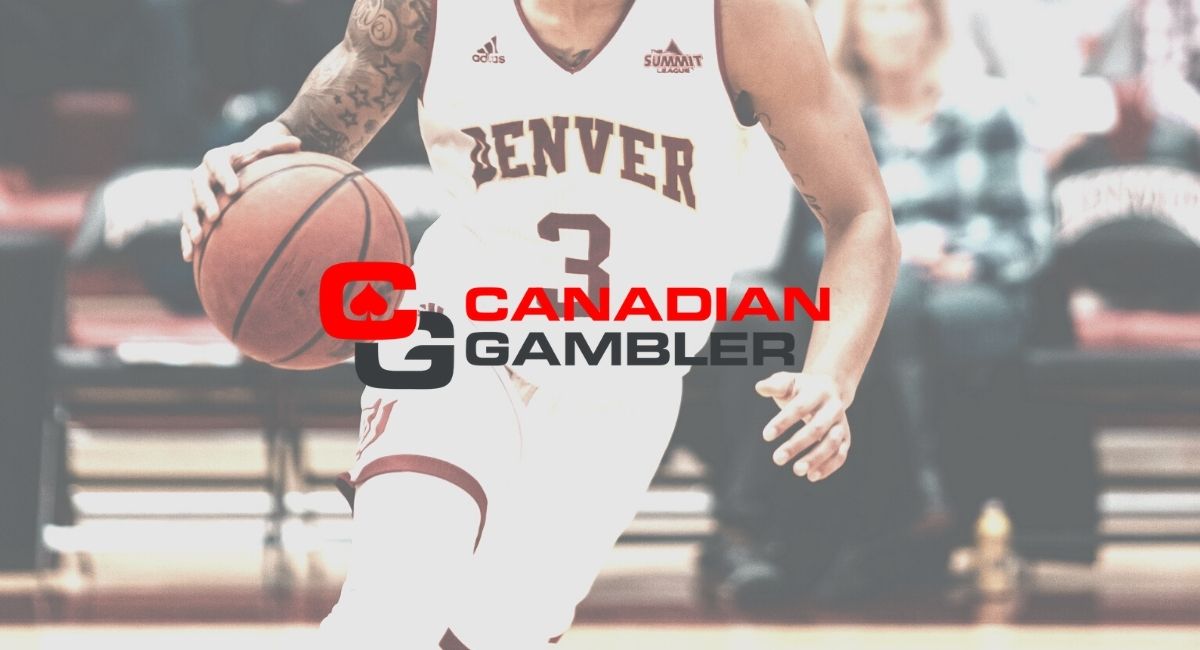Moneyline betting is the simplest form of online betting – it’s the type of sports bet a novice sports bettor would go for when signing up with a sportsbook for the first time.
When you bet on the moneyline, you’re simply picking a side to win the game. It’s different from betting on the spread, and depending on the odds, your potential payout will be either smaller or bigger.
Table of Contents
Although countless other sports bets are available, the moneyline still remains the favourite and most popular one. In this article, we will break down everything related to the moneyline and help you understand through examples what this wager stands for.
Moneyline Betting Explained
Moneyline bets are the most common kind of sports betting wagers for both novice and experienced gamblers.
Moneyline betting is when bettors guess which team will win the match. Of course, in sports such as boxing, the moneyline bets stand for the fighter to win the match. It makes no difference how they triumph, how many points they score or the number of rounds the game lasts for. If the team or player you’ve placed a bet on wins – you will get some money in return.
However, there is one exception to the rule.
While you will win the bet if the game goes into overtime in leagues where the winner must be determined no matter what, including the NHL, NFL, etc. – you won’t win it in other cases. If, for example, you bet on the European Champions League Final – Bayern Munich vs. Chelsea, and the game goes into overtime – you will lose the bet.
That’s because, in soccer, matches don’t go to overtime, and they can end in a draw. Therefore, the Champions League winner must be decided, and now the teams must go into overtime. In this case, the match’s standard form will be considered a draw, meaning you won’t win the moneyline bet even if your team triumphs in overtime.
Understanding How Moneyline Bets Work
Moneyline betting is simple, you bet on a certain team to win the match, and if they do – you will win money based on the odds. For example, if the odds for the New York Yankees when they face a weaker team are equal for both sides – sportsbooks would go bankrupt. In this case, everyone would wager on the New York Yankees, and bearing in mind they will most likely win the game against a weaker club – online bookmakers will have to pay out a huge sum of money.
The bookie’s idea is to provide fitting odds based on each team’s chance to win the match, along with a vig (house edge) to make profits for themselves. We will explain the ‘vig’ term in detail later in the article.
Let’s put this into numbers. Suppose the Golden State Warriors (+200) go against the Lakers (-300). If you bet CA$100 on the Golden State Warriors, you stand to make a CA$200 profit, and if you place a money bet of CA$300 on the Lakers, you will get a CA$100 in profits. Now, imagine if both of these clubs had +200 moneyline odds. Most sportsbooks would go bankrupt, wouldn’t they?
To break this down even more, let’s take a look at the five main parts that make up a moneyline bet:
- Two opposing sides or players (favourite and underdog)
- The sportsbook vig (house edge)
- Minus and plus sign
- Moneyline odds
- Point spreads (only in moneyline spread betting)
Don’t worry; we’ll examine each of these terms in detail below. Let’s first begin with the opposing sides.
Three Components of a Moneyline Wager
Besides the typical game with two teams unevenly matched, there is also a scenario called Evens Pick’em. Let’s break these terms further apart to make it easier for beginner sports bettors to grasp the format of moneyline betting.
The Favourite
The favourite is the individual player or club that’s most likely to win the match. One good example would be the Patriots playing with home advantage against the Miami Dolphins. Considering the home team performs well – they are most likely to win the match; therefore – they’re the favourites.
The moneyline odds for the Dolphins, in this case, will always be denoted with a minus sign. It will look something like this – Miami Dolphins (-150). This means that you will have to bet CA$150 in order to win CA$100. The total value you will get back if your moneyline bet is correct is the CA$150 you staked plus your CA$100 in profits.
The Underdog
The underdog is the less favoured team to win the game. Let’s take CA$100 as a common staking value to explain this moneyline bet better. Imagine a game between the NFL team Kansas City Chiefs against the Denver Broncos. Considering the form Kansas City Chiefs are in currently, they will most likely be considered as favourites.
So, the moneyline odds will look something like this – Kansas City Chiefs (-200) and Denver Broncos (+150). If you decide to place a moneyline bet on the Broncos and bet CA$100, you will make a profit of CA$150 if this team wins. You will get back the CA$100 you risked, along with your profit of CA$150. The less favoured team (underdog) will always have a plus sign next to its name.
Evens Pick’em
Besides the two money line formats we explained above, there is one more – an evens pick’em situation in which the two clubs’ performance levels are similar, and the sportsbook provides equal odds. In this scenario, sports bettors will get the same amount of money back no matter the club or player they choose to bet on.
The phrase “evens” and “pick ’em” is included on the moneyline bet when the teams have the same likelihood of winning. Let’s imagine a game between the New England Patriots against the Buffalo Bills. Both teams perform well, and top sportsbooks decide they both have an equal chance of winning the match. In this case, the moneyline odds for both teams will be displayed as -110. Whether you choose to place a moneyline bet on the New England Patriots or the Buffalo Bills – you will have to stake CA$110 to make a profit of CA$100.
Calculating Moneyline Odds
We hope we’ve cleared the air regarding moneyline betting on the favourite and the underdog. Let’s now take a look at how you can calculate your potential payout when placing a moneyline bet. We will take a look at all odds formats, including the decimal odds, fractional odds, and finally – American odds.
Decimal Odds – Decimal odds, also known as European odds – are the simplest format to calculate. They are mainly used across Europe and Australia, but also in Canada. They don’t have any signs that represent the favourites, but you can easily determine it just by looking at the odds. Decimal odds simply tell you how much you stand to win for every CA$1 you stake.
Let’s take an example of two MMA fighters – Connor McGregor (1.60) against Anderson Silva (2.70). If you place a winning wager on McGregor worth CA$1 – you will get CA$1.6 back. If you stake CA$10, you will get CA$16 back. So, the math goes like this:
Total Payout = Your Stake x The Odds ($10 x 1.60 = $16 Payout)
Note that CA$16 is not your profit; it’s the total payout. Your profit will be CA$6. So, whenever a team, fighter, or player has odds below 2.00 – they are considered the favourites as you get less than the amount you’ve staked.
The lowest decimal odds you can see are 1.01. This typically happens in live betting when a certain team leads with a big point difference with 15 minutes left to play. Our advice is to always avoid small odds such as this one, as you’re risking too much to win just 1%.
Fractional Odds – Since they require calculating a fraction, they’re a bit complicated to understand. They represent the profit you stand to win to the stake, and they’re displayed as 6/2, 5/2, etc.
Calculating them is easy, and it involves converting them into decimal odds. The calculation goes like this:
Fractional odds: 6/2 – (6/2) + 1 = 4.00. Simply divide 6 by 2 and add 1. You now get the decimal odds which are easy to calculate.
Minus Odds and Plus Odds Explained
The most widely used moneyline odds in Canada are the American odds. Whether you want to place a money line bet on the NFL, NHL, NBA, UFC, or any other sport for that matter – the American odds will always be displayed in the same fashion.
There will always be a plus sign for one team and a minus sign for the other – excluding the above example of two evenly-matched teams, in which case both signs are a minus. The ‘+’ represents the underdog, and the ‘-‘ represents the favourite. Both of them are calculated in a different manner.
Let’s examine the underdog first. If you see a +200 moneyline odds at online sportsbooks for a certain team, it means that you will win CA$200 by staking CA$100. Therefore, the ‘+’ sign represents how much you stand to win by wagering CA$100. Of course, you can always stake less and bet $CA10. In that case – you will make a profit of CA$20 if your moneyline bet goes through.
The favourite, on the other hand, is always represented with a minus sign. This doesn’t imply how much you stand to win by staking CA$100, but instead tells you how much you should stake to make a CA$100 profit. Let’s take Super Bowl 2020 as an example – Kansas City Chiefs against the San Francisco 49ers. Suppose the Chiefs had odds of -230 at most American Sportsbooks. The -230 represents that you must stake CA$230 to win CA$100. It’s the opposite of betting on the underdog. Of course, you can always bet less, and we advise you to use an online odds calculator.
Implied Probability
The implied probability stands for converting the moneyline odds into a percentage. New bettors can always use an online calculator to convert the odds into implied probabilities, but learning to do it yourself is always worth it. Below, we will provide examples of how to turn the odds into an implied probability.
Let’s start with decimal odds – they’re the easiest ones to convert. Let’s imagine an NBA game between the Chicago Bulls (2.20) and Phoenix Suns (1.70). We will take the Chicago Bulls (2.20) to make the calculation.
- Decimal Odds: (1/Decimal Odds) x 100 (1/2.20) x 100 = 45.45%
So, the implied probability for the Bulls to win the match is 45.45%. Let’s continue with fractional odds – 6/2.
- Fractional Odds: Denominator ( Denominator + Numerator) x 100 – 2/(2 + 6) x 100 = 25%.
Let’s now take a look at American odds of +400 and -400.
- Positive Odds: 100 / (Positive Odds + 100) x 100 – 100 / (400 + 100) x 100 = 20%
- Negative Odds: Negative Odds / (Negative Odds + 100) x 100 – 400 / (400 + 100) x 100 = 80%.
We’re aware it looks a little bit confusing, but in reality – it’s not. Of course, you can always use an online calculator if you don’t want to do this yourself. Nevertheless, expert bettors almost always calculate the implied probability as they play a huge role in their strategy of choosing the best sports betting picks.
How to Handicap Moneyline Bets
We’ve explained almost every aspect of moneyline betting, but we’re still not quite done. Handicap betting is an integral part of moneyline betting, and you must learn about it before placing any moneyline bets.
Before we continue, you should know that the handicap is in place to even out the odds for the favourite and underdog, allowing you to bet on any team and get the same payout in return. It’s basically a fake Evens Pick’em scenario. Below, we will thoroughly explain it with examples.
Let’s take some baseball moneylines as an example for a change – Atlanta Braves vs. New York Mets. Suppose the Mets are the huge underdogs in this match with odds of +500. To even out the odds, a sportsbook must provide an imaginary point advantage for the Mets, and remove some points from the Braves. That’s called a handicap bet (point spreads), or in the case of baseball – runline – because there are no points in this sport.
The runline (handicap) for the Mets will be +2.5 runs, which means that if you bet on it, you will still win your wager even if the Mets lose by a 2 runs difference. If they lose by 3 runs – you will lose. The same applies to the Braves with a -2.5 runline. If you bet on the Braves’ point spread, and they win by less than 3 runs difference, you will lose the bet.
Therefore, the handicap serves as a way to even out two unevenly matched teams, allowing you to place a moneyline bet for better odds with smaller implied probabilities.
Moneyline Bets Versus Props and Futures: Which Ones Have More Vig?
You’ve already learned everything about moneyline sports betting, moneyline odds, and calculating potential winnings. We will now look into what Props and Futures bets are, how they work, and finally, compare which bet has the smallest vig (juice or house edge).
Betting On Futures – Futures bets are long-term stakes that can take several months to settle. Futures are also the most common wagers about who could win a tournament or lift the league’s trophy. A good example is betting on the Super Bowl winner at the beginning of the season. These bets usually carry high odds, and if you successfully pick the winner – you stand to win a solid amount of money.
Prop Bets – A proposition wager, sometimes referred to as a “prop,” is a type of side bet based on particular outcomes that don’t directly affect the result of the match. Betting on the Lakers to win the second quarter is considered a prop bet. It doesn’t directly affect the end result, and that’s the primary predisposition for a prop bet.
Let’s now explain what the vig (vigorish) is. The vig (juice) is the fee a sportsbook takes to accept your wager. Let’s look at an example of two evenly matched clubs – the Ravens vs. the Patriots. Suppose the sports betting odds for both teams are -110, meaning you will have to wager CA$110 to win CA$100.
If the juice didn’t exist, both teams would have sports betting odds of +100. The 5% to 10% difference you will notice at most sportsbooks is the vig, and it’s how sportsbooks make their profit.
You’ve reached the end of our article, and we certainly hope we’ve cleared the air regarding moneyline betting. If you ever think you’ve developed a gambling problem, make sure to contact a responsible gambling operator and remember – sports betting is for entertainment purposes – not a source of income.
Godspeed!
Common Questions in Moneyline Betting
Are parlays a good option in moneyline betting?
If you want to risk more and win more – yes, they are. You can combine several moneyline bets in a parlay bet. Although you stand to win a solid amount of money if all teams go through, you will lose the bet even if only one of them doesn’t win.
What’s the difference between a moneyline bet and a point spread?
By placing a moneyline bet, you’re betting on one team or player to win. The end result is all that matters here, and as long as your team wins with at least one point difference – you will still win money. When placing point spread bets, you are once again backing a specific team to win, but the difference lies in the end result. If you bet on the Nets with a -10 point spread to win against the Celtics, you will lose the wager even if the Nets win 90-83. That’s a 7 point difference, and the Nets had to win by at least 10 points difference.
Can I place moneyline bets and spread bets together in parlays?
Yes, but not the same match. You can select different matches and combine a moneyline bet with other spread bets. However, you can’t bet on the Lakers’ moneyline and handicap in a single parlay wager.
Can I place moneyline bets while watching a game?
Yes, you can. In fact, the moneyline is most useful when you get that gut feeling that a certain team will make a heck of a comeback. You can place a moneyline bet live, and you can expect a better payout if you’re right. However, the moneyline varies when it comes to live betting, which means that as the match goes on – the odds will change.





